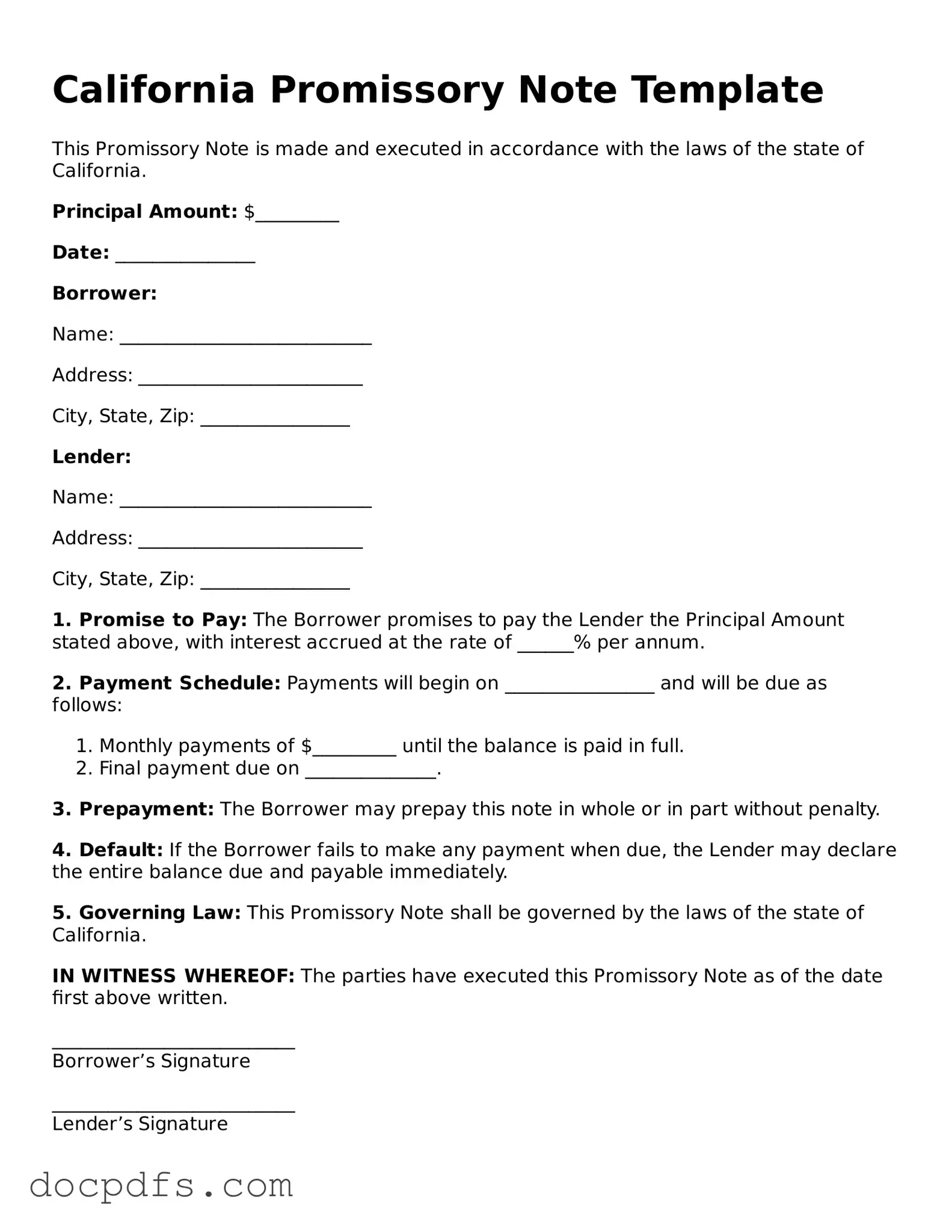Free California Promissory Note Form
A California Promissory Note is a written promise to pay a specified amount of money to a designated party under agreed-upon terms. This legal document outlines the borrower's commitment to repay the loan, including details such as interest rates and payment schedules. Understanding its components can help both lenders and borrowers navigate their financial agreements more effectively.
Open Promissory Note Editor Now
